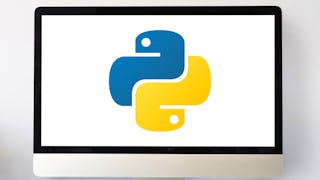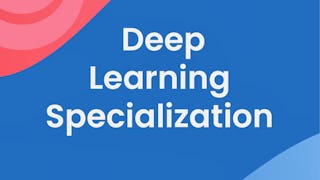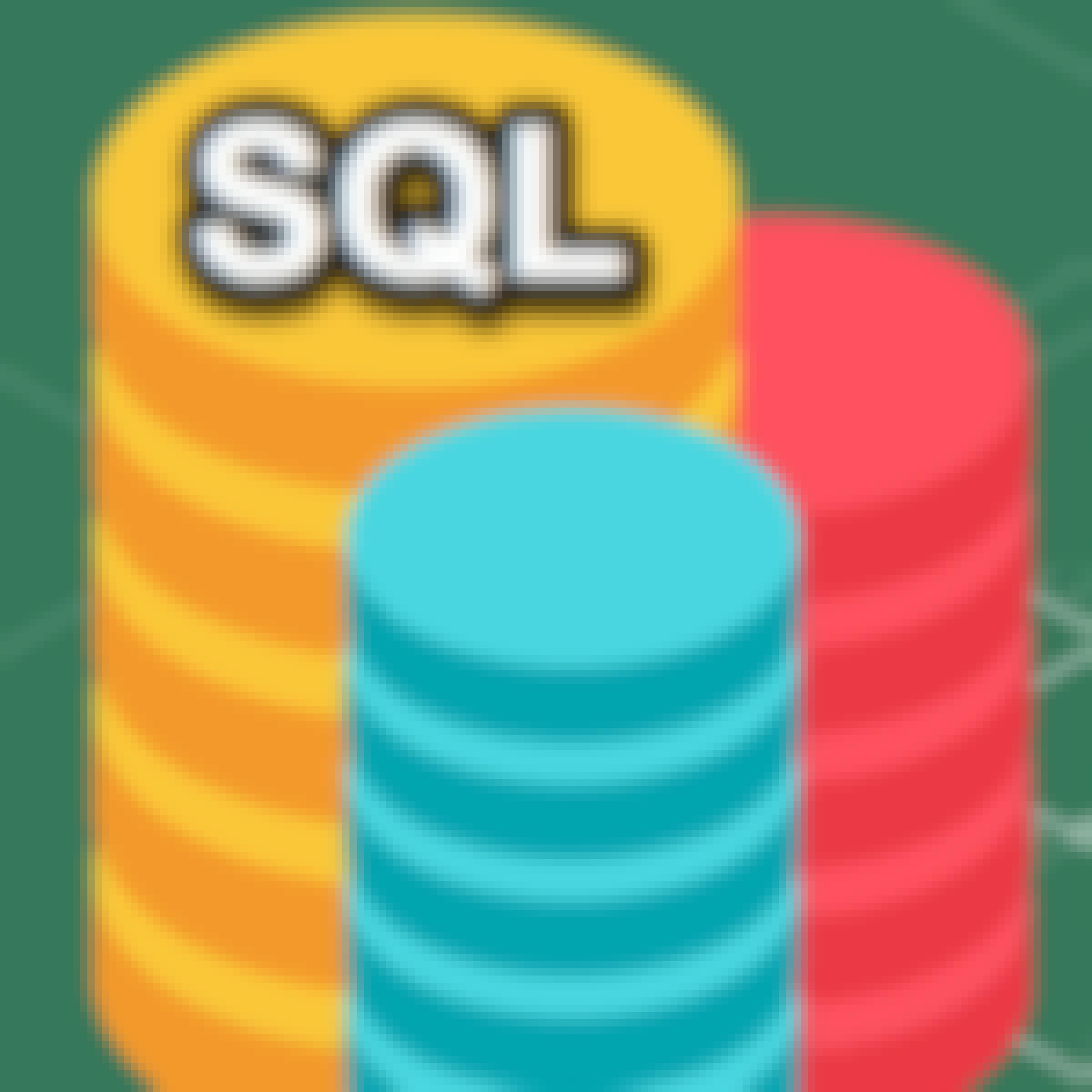Filter by
SubjectRequired
LanguageRequired
The language used throughout the course, in both instruction and assessments.
Learning ProductRequired
LevelRequired
DurationRequired
SkillsRequired
SubtitlesRequired
EducatorRequired
Explore the Survival Analysis Course Catalog

University of Toronto
Skills you'll gain: ArcGIS, Spatial Data Analysis, Spatial Analysis, Geographic Information Systems, Geospatial Mapping, GIS Software, Data Mapping, Data Visualization, Metadata Management, Query Languages, Global Positioning Systems, Quantitative Research, Data Compilation, Data Modeling, Typography, Data Manipulation, Data Processing, Data Storytelling, Design Elements And Principles, Image Analysis

Skills you'll gain: Excel Formulas, Microsoft Excel, Data Cleansing, Data Analysis, Data Import/Export, Spreadsheet Software, Data Wrangling, Data Quality, Pivot Tables And Charts, Google Sheets, Data Manipulation, Data Visualization Software, Information Privacy

Skills you'll gain: Jupyter, Automation, Web Scraping, Python Programming, Data Manipulation, Data Import/Export, Scripting, Data Structures, Data Processing, Data Collection, Application Programming Interface (API), Pandas (Python Package), Programming Principles, NumPy, Object Oriented Programming (OOP), Computer Programming

Skills you'll gain: Exploratory Data Analysis, Data Storytelling, Statistical Hypothesis Testing, Data Ethics, Data Presentation, Data Visualization Software, Sampling (Statistics), Regression Analysis, Feature Engineering, Data Transformation, Descriptive Statistics, Data Visualization, Tableau Software, Data Manipulation, Statistical Analysis, Probability Distribution, Statistical Methods, Applied Machine Learning, Object Oriented Programming (OOP), Data Analysis

Skills you'll gain: Process Analysis, Requirements Elicitation, Business Analysis, Risk Analysis, Backlogs, Requirements Management, Stakeholder Engagement, Business Process, User Requirements Documents, User Story, Business Requirements, Requirements Analysis, Business Modeling, Business Process Improvement, Business Intelligence, Business Risk Management, Business Strategies, Financial Analysis, Performance Measurement, Business Planning

DeepLearning.AI
Skills you'll gain: Computer Vision, Deep Learning, Image Analysis, Natural Language Processing, Artificial Neural Networks, Tensorflow, Supervised Learning, Large Language Modeling, Artificial Intelligence and Machine Learning (AI/ML), Artificial Intelligence, Applied Machine Learning, PyTorch (Machine Learning Library), Machine Learning, Debugging, Performance Tuning, Keras (Neural Network Library), Python Programming, Machine Learning Algorithms, Analysis, Data Processing
 Status: AI skills
Status: AI skillsSkills you'll gain: Prompt Engineering, Generative AI, New Product Development, Product Management, Product Lifecycle Management, Product Development, Innovation, Product Roadmaps, ChatGPT, Large Language Modeling, Product Planning, Commercialization, Product Strategy, Artificial Intelligence, Project Management Life Cycle, Data Ethics, OpenAI, Stakeholder Engagement, Stakeholder Management, Competitive Analysis

Skills you'll gain: Data Storytelling, Requirements Elicitation, Risk Mitigation, Business Analysis, Business Process Modeling, Risk Analysis, Process Mapping, Process Optimization, Requirements Management, Risk Management, Business Requirements, Stakeholder Management, Work Breakdown Structure, Scope Management, Process Analysis, Stakeholder Engagement, Data Visualization Software, Excel Formulas, Microsoft Excel, Analysis
 Status: New AI skills
Status: New AI skillsGoogle
Skills you'll gain: Data Storytelling, Rmarkdown, Data Literacy, Data Visualization, Data Presentation, Data Ethics, Interactive Data Visualization, Interviewing Skills, Data Cleansing, Data Validation, Ggplot2, Tableau Software, Presentations, Spreadsheet Software, Data Analysis, Data Visualization Software, Stakeholder Communications, Dashboard, Sampling (Statistics), R Programming

University of Pennsylvania
Skills you'll gain: Return On Investment, Financial Reporting, Capital Budgeting, Financial Statements, Financial Modeling, Mathematical Modeling, Statistical Modeling, Regression Analysis, Business Modeling, Income Statement, Financial Analysis, Risk Analysis, Cash Flows, Business Mathematics, Financial Planning, Corporate Finance, Predictive Analytics, Spreadsheet Software, Google Sheets, Microsoft Excel

Johns Hopkins University
Skills you'll gain: Shiny (R Package), Rmarkdown, Exploratory Data Analysis, Regression Analysis, Leaflet (Software), Version Control, Statistical Analysis, R Programming, Data Manipulation, Data Cleansing, Data Science, Statistical Inference, Statistical Hypothesis Testing, Predictive Modeling, Data Wrangling, Data Visualization, Plotly, Machine Learning Algorithms, Plot (Graphics), Knitr

Skills you'll gain: SQL, Databases, Stored Procedure, Relational Databases, Database Design, Query Languages, Database Management, Data Analysis, Jupyter, Data Manipulation, Pandas (Python Package), Transaction Processing
Survival Analysis learners also search
In summary, here are 10 of our most popular survival analysis courses
- GIS, Mapping, and Spatial Analysis: University of Toronto
- Excel Basics for Data Analysis: IBM
- Python for Data Science, AI & Development: IBM
- Google Advanced Data Analytics: Google
- Certified Business Analysis Professional™ (CBAP®): Starweaver
- Deep Learning: DeepLearning.AI
- IBM AI Product Manager: IBM
- IBM Business Analyst: IBM
- Google Data Analytics: Google
- Finance & Quantitative Modeling for Analysts: University of Pennsylvania










